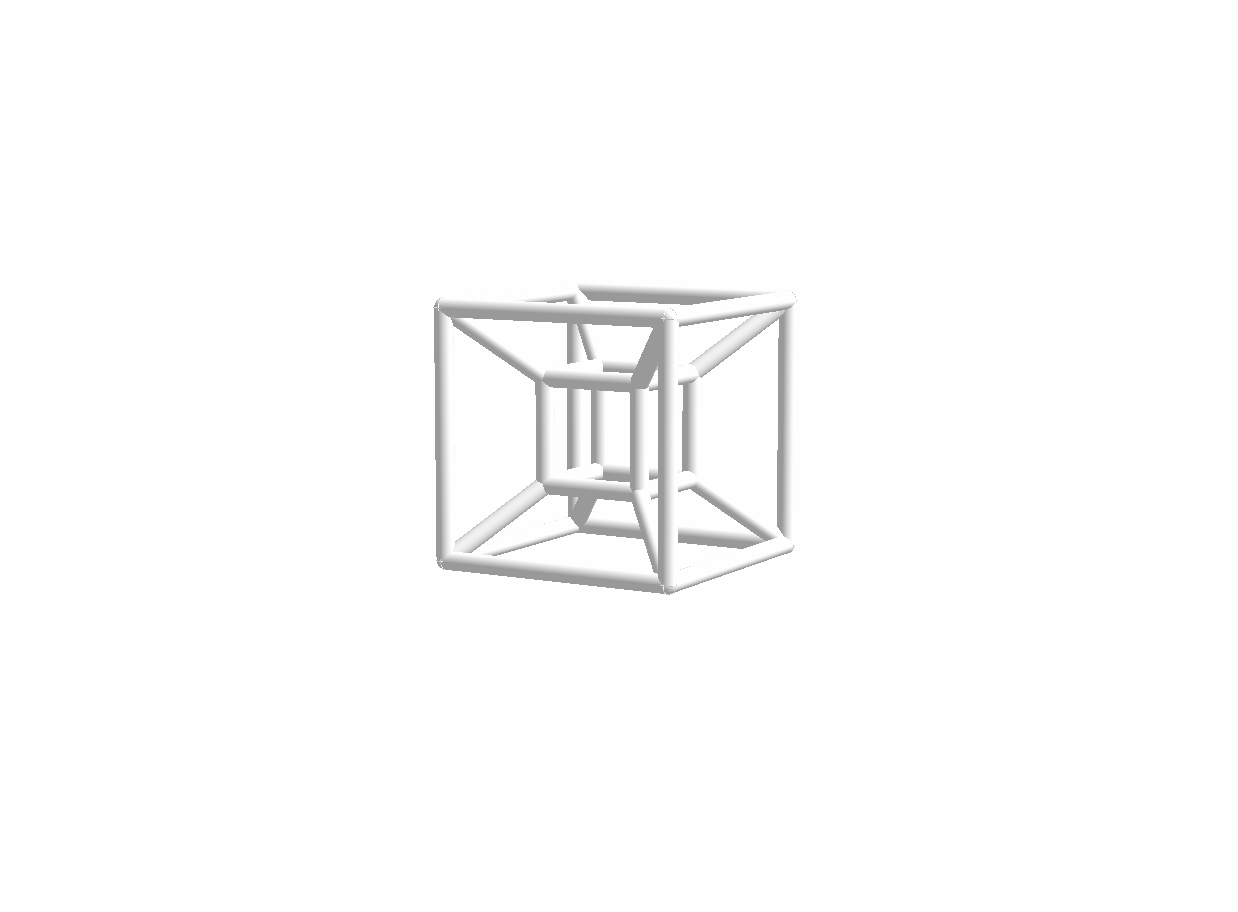Hello Hyperworld!

Dear friends, family, students, and followers: Welcome to the Hyperblog, a new platform for hypernews about the design and fabrication of my (really dope) hypercube zoetrope.
If you’ve spent any significant amount of time with me in the past several years, it’s likely that you’ve (over)heard me rambling on (and on and on) about my visions for a 3D zoetrope that would animate the “shadow” of a hypercube’s frame as it performs a motion called double rotation within 4-dimensional space. Well, here it (almost) is!
For context, this project began years ago with a successful round of prototypes, modeled in Mathematica and printed on my Prusa MINI. After that initial milestone, the project went on hiatus as other work took priority. Recently, however, I’ve been inspired to revisit the project, and this time I’ve brought a small team of undergraduate students on board. Together, we are rebuilding the core hypercube modeling logic from the ground up, moving from Mathematica to an open-source pipeline that utilizes Python and OpenSCAD.
While the students have been incredibly helpful on the hypercube modeling side, I’ve poured myself into learning the
CAD/CAM functionalities of Fusion 360, which are being used to design the zoetrope’s rotational structure, the gears that
will drive its motion, and a protective (and stunning, if you ask me) outer cage — all to be constructed primarily from wood.
To accomplish the woodworking goals for Hypercube, I’ve recently become a member at the San Diego Fine Woodworkers Association,
and I look forward to starting the fabrication process in their shop very soon!
My ultimate goal for this project is to submit Hypercube for the Mathematical Art Exhibit at the 2027 Joint Mathematics Meetings. I’ve attended and presented at many JMMs as a mathematician, but the prospect of presenting as a mathematical artist is a new and exciting challenge. I’m looking forward to sharing the progress of this entire process here on the blog and will do my best to post regular updates!
Hypercheers!
Get Weekly Updates
Want to follow Hypercube's development journey? Subscribe for weekly email updates!